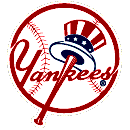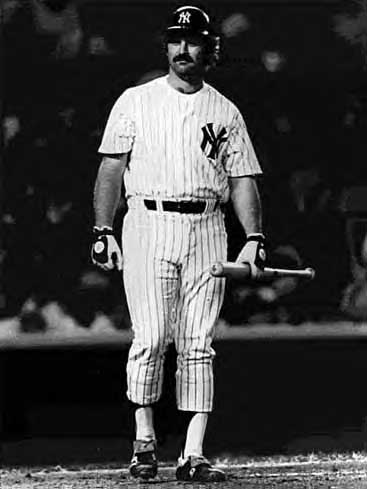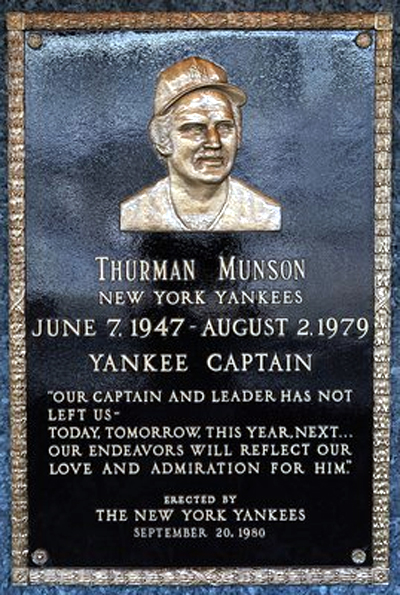



|
Thurman
Munson was born on June 6th, 1947 in Akron, Ohio. A multi-sport star in
high school, he attended Kent State University on a baseball scholarship
and was an All-American at catcher. He married his childhood sweetheart
Diane in 1968, 3 months after he was drafted the Number 1 pick, 4th overall
by the New York Yankees in the June draft. During the Yankees' rebuilding years, Thurman and Bobby Murcer were the stars around whom the team was constructed, and they were close. When Murcer was traded in 1975 for Bobby Bonds, Thurman became the true star of the team. During the Yankees' mini-dynasty of 1976-78 Munson was at his peak. The Yankees went from a mediocre team to back-to-back World Championships and Munson rivaled Johnny Bench as the best catcher in baseball. On and off the field, he was the leader of the team. On the field, he piled up his career-best offensive statistics (even a surprising 14 stolen bases in 1976). He hit over .300 with 100 or more RBI three years in a row (1975-77), won the MVP Award in 1976, and hit .529 in the 1976 WS and .320 in the 1977 and 1978 WS. He was also a six time All-Star. Catfish Hunter credits Thurman for his late-season comeback during the Yankees' 1978 pennant run. Munson had an uneasy relationship with Reggie Jackson. When Jackson signed with the Yankees as a free agent in 1977, it was Thurman, the team captain and leader in the team's vicious clubhouse humor, who broke the ice and worked to include Jackson. But then a pre-season interview was published in which Jackson claimed that he was "the straw that stirs the drink. It all comes down to me. Maybe I should say Munson and me, but he really doesn't enter into it. Munson thinks he can be the straw that stirs the drink but he can only stir it bad." Later in the season things were smoothed over, but the relationship was never again the same. To ease the strain of catching 140 games a year, Thurman began playing the outfield and DH'd more. There was even serious talk about eventually moving him to first base. And although there was talk of trading him to Cleveland, these were only unsubstantiated rumors. Baseball players, just like any other person, are mere humans. On August 2, 1979, Thurman was practicing touch-and-go landings at the Akron-Canton Airport with his newly purchased Cessna Citation. The twin-engine jet fell 1000 feet short of the runway during an attempted landing and burst into flames. Thurman was killed in the accident while two others were injured. He was only 32 years. The Yankees honored Thurman by retiring his uniform number (15) and placing a memorial plaque on the center field wall at Yankee Stadium in 1980. Although he is not an official member of the Baseball Hall of Fame yet, Thurman Munson established himself, during his brief ten year career, as one of the premier catchers in baseball history. A bronze re-creation of Thurman's locker, spikes, glove, and jersey included, has been preserved in Cooperstown. Let's hope that someday, he will take his rightful place among baseball's immortals. |



